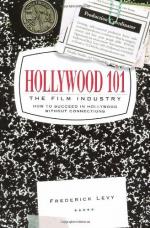|
This section contains 8,589 words (approx. 29 pages at 300 words per page) |

|
The Historical Primacy of Dialogue Sound
The coming of synchronous sound to the motion pictures in 1927 with THE JAZZ SINGER introduced a new aesthetic based on the relationship of the visual picture to the soundtrack. Many critics have argued that its arrival prompted Hollywood to abruptly shift feature film production toward models taken from stage and away from the more expressive visual creativity that had developed in silent cinema during its "golden years" from 1923 to 1928. During the earliest years of the "talkies," such critics argued, motion pictures developed an over-reliance on dialogue and voice-over, as filmmakers struggled with rudimentary, and often problematic, technologies for recording sound onto film.1
Synchronous sound was immediately accepted in both popular and critical circles as a natural progression of the motion-picture medium, whereby picture and sound combine to form a new entity that shifts the aesthetic experience of the...
|
This section contains 8,589 words (approx. 29 pages at 300 words per page) |

|


